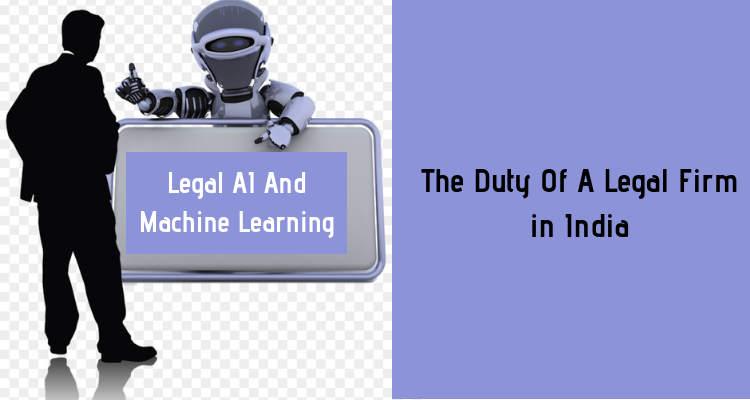It Is The Duty Of A Legal Firm To Combat Bias In Legal AI And Machine Learning
Until recently, legal AI was considered to be hype and was just a fashion to ‘AI that.’ Now with the constant effort of the legal firms to combat the bias, people are looking beyond the hype of Artificial Intelligence, AI and machine learning. These are the two phrases that a Legal firm in India would draw balk at but that was until recently. Things have changed, and now the world has shrunk, so to speak, and people are more connected, informative, and engaged.

Over the years, technology has advanced rapidly providing consumer empowerment. They have more choices and preferences which is the flavor of the moment. As a consequence, now you encounter with a more discerning client base. They will demand efficient and effective service for less even from their traditional legal service providers. Therefore, it is essential that the law firms react, take up the challenge, make amendments in their practice and policies, be proactive and remain competitive.
The law firms are now on the lookout for revered and most talked about technologies of this moment. As a result, there has been a huge upsurge in the number of law firms, both large and small, opting for, talking about, offering and experimenting with AI and machine learning solutions available in the legal market. However, whether these are genuine attempts for improving the legal service scenario and delivery or are mere buzzwords on a flyer to allure new clients has been debated since its very beginning. Experts and critics also focus on whether AI and machine learning solutions have the potential to produce any biased results.
Caution is required
Whether it is a small Legal firm in India or a large one, it is necessary to proceed with extreme caution regarding AI and machine learning solutions keeping in mind the bias before they predict or suggest any outcomes. There is also adequate training required while feeding the AI algorithms designed by expert data scientists and programmers that have the ability to digest and breakdown huge data sets.
- Such machine analysis enables the program to spot different patterns and trends in the imagery, language, or even the sound of these data sets fed into the algorithm. The results are found to be as good as humans deducing from the given data.
- Proper scrutiny must not be skipped or overlooked in a rush to build groundbreaking AI solutions. Adequate data sets must be used for the best outcome and to train the solution. Bias results will be eliminated if it is trained properly.
In a way, such possibilities of lacunas have fuelled the hype regarding the level of achievement of AI and the time in which it can be achieved. With a little bit of preoccupation and wrong focus, questions about the employment rights of AI are also raised.
Different elements of bias
As a consequence of the hype, bias has crept in that often creates immoral, unethical, and sometimes illegal outcomes even by the most successful Law offices in India. There are different elements of bias such as:
- Gender – This bias can be seen when software was trained on specific text from Google News asking to complete an avowal “Man is to computer programmer as a woman is to X,” it replied, “homemaker.”
- Sexual orientation – This is another bias that an AI solution will provide. Hoping it can accurately predict sexual orientation of a user when it is trained on a set of data of online dating photos of a large number of white users it caused consternation in the community and LBGTQ.
- Racial – This is the most significant bias found when an algorithm was used to solve a fight crime by a litigation firm. It determined that young African-American men are more likely to commit a crime. The algorithm thought that race was a significant sign of criminality. However, in reality, when socio-economic status is included in the data set, it will successfully remove the racial bias.
Beating bias in legal AI
All judicial systems of the world whether it is a Litigation firm in Delhi or in the US agree that more is required to be done to AI and machine learning solutions to ensure that the data does not disseminate societal inequalities and is truly representative.
Research and development teams are on the lookout for better measures to ensure that the data is preprocessed to eliminate chances of unbalanced and misrepresented outcomes.
- Considering the potential for bias in legal AI, all Law firms in India and worldwide must act responsively to combat it successfully. The application of AI must involve predictive analytics and natural language processing that helps to predict outcomes to any legal case.
- To assure that the results are unbiased the solution must be first trained on several other historical case documents. This will enable better spotting of trends and patterns in the language. This practice will help to conclude and equate a few specific languages in the documents to other specific case results.
- To beat the bias of the discerning data further, the data itself must be first interrogated and measured to find how unbalanced it is to eliminate the chances of over-fitting.
- Secondly, the intrinsic properties must be recognized specifically to eliminate the possibilities of gender factor influencing the outcome.
It is also required to ensure transparency in the algorithms applied to train the data for unbiased and desired outcomes using legal ‘AI’ solutions to make its future bright in the legal scenario.
Author Bio:
Amy Jones is a versatile legal expert and working in Ahlawat & Associates for last 3 year. One of the Corporate Lawyers firm India where you can discuss with experts about your legal problems. You can likewise follow Amy on Twitter.










